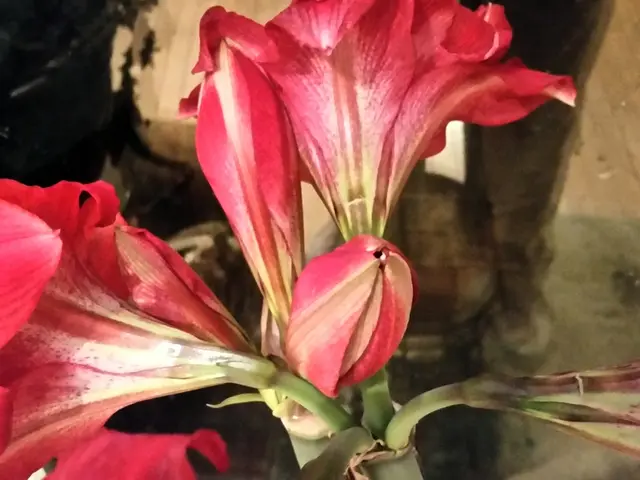Removing Spider Mitchells: Dealing with a Troublesome Indoor Pest
Spider mites, tiny arachnids with a penchant for houseplants, are more common than you'd like. Josh Brown of Predatory Plants, a carnivorous plant nursery, explains these pesky critters thrive in warm, low-humidity environments like most homes and often attack stressed plants, a common occurrence for tropical plants.
Curious about their differences with other mites species, we reached out to Melinda Myers, an expert gardener, author, and host of the Great Courses How to Grow Anything DVD series. Turns out, spider mites are the most common as they form messy webs whereas cyclamen and broad mites are occasional pests and do not form such webbings.
With their needle-like mouthparts, spider mites use these to pierce leaves and suck plant juices—leaving behind stippling or tiny white dots on the leaves. As they multiply, leaves may curl inward and are often coated in a messy web.
To check for an infestation, use a magnifying glass and hold a piece of white paper under a leaf to see the specks moving across the page. You may also feel the grittiness of their droppings or their cast exoskeletons.
To rid your garden of these arachnids, try washing the leaves with soapy water or using horticultural oils such as neem oil, which kill all stages of mites on contact. A strong blast of water may dislodge many of the mites but won’t be effective when done only once.
In preventing an infestation, isolate new plants for several weeks before introducing them to the rest of your collection and clean the leaves using a damp cloth or makeup brush. Additionally, promote a healthy and habitable environment for your plants by ensuring sufficient moisture, sunlight, and increasing the humidity around your plants. Grouping plants together, setting them on saucers filled with water, and misting them can also help increase humidity.
Tired of dealing with spider mites? Consider investing in plants that are resistant to them, such as the easy-care snake plant or ZZ plant. By following these tips, you'll be on your way to a mite-free, thriving houseplant collection.
- Houseplants, particularly tropical ones, can fall victim to spider mites, tiny arachnids that thrive in warm, low-humidity environments like most homes.
- Melinda Myers, a gardening expert, points out that while spider mites form messy webs, other mite species like cyclamen and broad mites are occasional pests and don't form such webbings.
- Spider mites use their needle-like mouthparts to pierce leaves and suck plant juices, leaving behind stippling or tiny white dots on the leaves.
- To check for an infestation of spider mites, use a magnifying glass, hold a piece of white paper under a leaf, and look for specks moving across the page.
- To get rid of spider mites, try washing the leaves with soapy water or using horticultural oils such as neem oil, which kill all stages of mites on contact.
- Preventing an infestation involves isolating new plants for several weeks, cleaning the leaves using a damp cloth or makeup brush, and promoting a healthy environment for your plants by providing sufficient moisture, sunlight, and increasing humidity around them.








